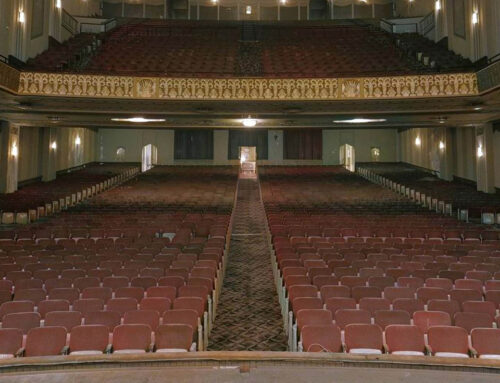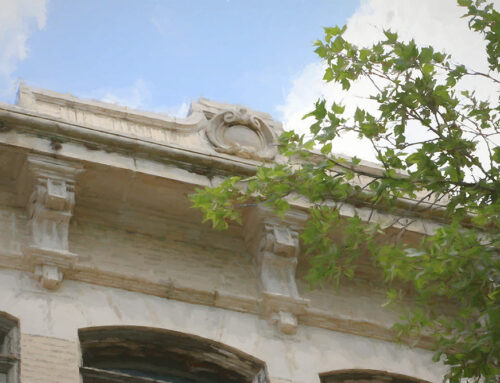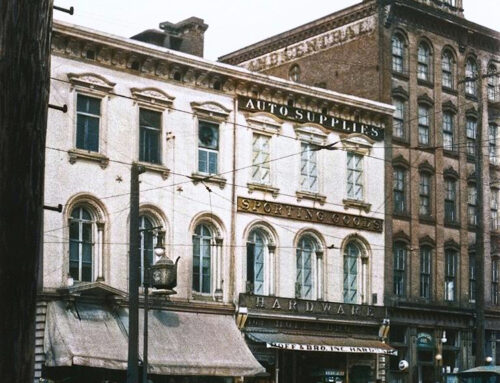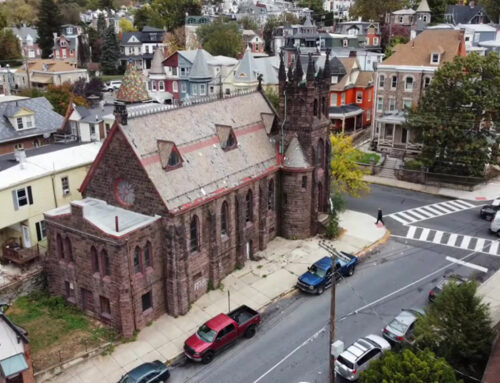Aaron Albright made a startling recommendation to his employers in June 1856. He proposed building a tunnel 2,500 feet long under Alsace Hill in Muhlenberg Township.
Albright was chief engineer of the Reading Water Co. The company, formed March 16, 1819, supplied water to the City of Reading. But from the beginning there never had been more than just enough to meet demands.
The plan Albright drew up ended all that. He built the longest tunnel construction in Berks County up to that time, and for a long time thereafter. Every day, for more than a century a river of water poured through the pipes in the Alsace Hill tunnel. At first, it was just 500,000 gallons daily. Later, when the facilities were enlarged, as much as 3,000,000 gallons daily were piped to Reading homes.
All of it came from the dam John Bernhart originally constructed for the grist mill alongside his Colonial home. The dam was built in 1853, but enlarged in later years to increase the holding supply from 14,000,000 gallons to 42,000,000 gallons.
Bernhart’s Grist Mill once powered by Spring Creek also known as Bernhart’s Run along Spring Valley Road, Muhlenberg Township was erected in 1856 by John Bernhart to replace a smaller grain mill. In 1876, steam power was introduced. Solomon Leisz Snyder oversaw operation of the mill until his death in 1892. Indications are milling discontinued around 1909. Thereafter, the four-level structure was used for storage until sold by Solomon Snyder’s descendants in 1973.
Below: Image Gallery – Bernhart’s Grist Mill – Touch or Click Images to Enlarge.
A stone’s throw from the old mill is a splendid manor house, the oldest part of which pre-dates 1840 and was operated as a public house by the Bernharts. The house is located at the intersection of Crystal Rock Rd. and Spring Valley Road.

Below: Original manor house.

When Albright suggested the tunnel, he pointed out that it was necessary to deliver the flow of water by gravity. Otherwise an expensive pumping station would be needed to take the water over Alsace Hill and on to Hampden reservoir. The idea was daring because the entire job would have to be done with pick and shovel. There was no steam or compressed air in those days. In addition, Alsace Hill was known to be thick with sliding slate rock.
Albright made a survey and laid out the plans for sharing the water with Bernhart’s mill. The amount taken by the city, he maintained, still would permit the grist mill to operate. He was right about this, too.
The Reading Water Co. in July 1821 put into operation the reservoir and springs at Hampden. In 1838, for added supply, the company bought a property far out on Hill road, which then wasn’t cut through to the city. There, they constructed Egelman’s reservoir. In 1853, they began to take water from Mineral Spring Creek.
Demand for more water for a growing city brought on the suggestion that they tap the Schuylkill River. There was considerable objection to this. First, tapping the Schuylkill would require expensive pumping whereas all supplies thus far had been by gravity. Also, it was maintained that spring water was clearer and safer.
On April 13, 1857, the Reading Water Co. paid John Bernhart $12,235 for 168 acres and the right to take water. Tunneling began almost at once. The tunnel was six to seven feet high; four to five feet wide. Through it was placed a 12-inch pipe.
Entrance to the tunnel was along what is now called Bemhart’s Ave. At some places, the pipe was 70 feet under the surface. For the last 200 feet toward Reading it was but seven feet underground. Young people of the period who sought reckless adventure found ways to enter the tunnel and walk 2,500 feet to the exit, which was northeast of the old fairground on N. 11th street. The old fairgrounds fronted on N. 11th St. at City Line and extended eastward to about what is now 13th Street. Today this site is occupied by the Gus Yatron /Reading Post Office. From the exit, the pipeline curved east to what someday would be 15th street. It held this line to 17th street between Richmond and Rockland. There, the line turned southwest to 12th and Greenwich streets and continued on to Hampden Reservoir. Water did not flow through the pipelines until 1859.
In 1886, it was found necessary to enlarge the dam and the intake of water. The city took over the Reading Water Co. that year, paying $500,000 for the entire plant. At Bemhart’s, the city first bought an additional 29 acres. In 1909, a filter bed was added. Filters had been placed in Egelman’s in 1904 and at East Reading in 1905.
Several times, the tunnel had to have extensive repairs because of landslides and cave-ins. By 1900, neither the entrance nor the exit was visible. Manholes were installed from the surface to the tunnel to permit repairs. Use of the pipelines came to an end in the 1940s, when sufficient water was added to the Reading system by the enlarged Maidencreek plant. Little of the tunnel under Alsace Hill is believed to remain. Lack of maintenance probably has caused it to collapse.
Just as time has done away with the Alsace Hill tunnel, so time has wiped out almost all the identity of Aaron Albright whose skill and ingenuity gave one of the early conveniences of city life to so many Reading homes for so many years. It is known he lived on the south side of Court Street below 6th at the time the tunnel was built. Later, he moved to the south side of Washington Street above 4th where he died Nov. 12, 1868. Other than that, no record of his life or career has been located.








Leave A Comment